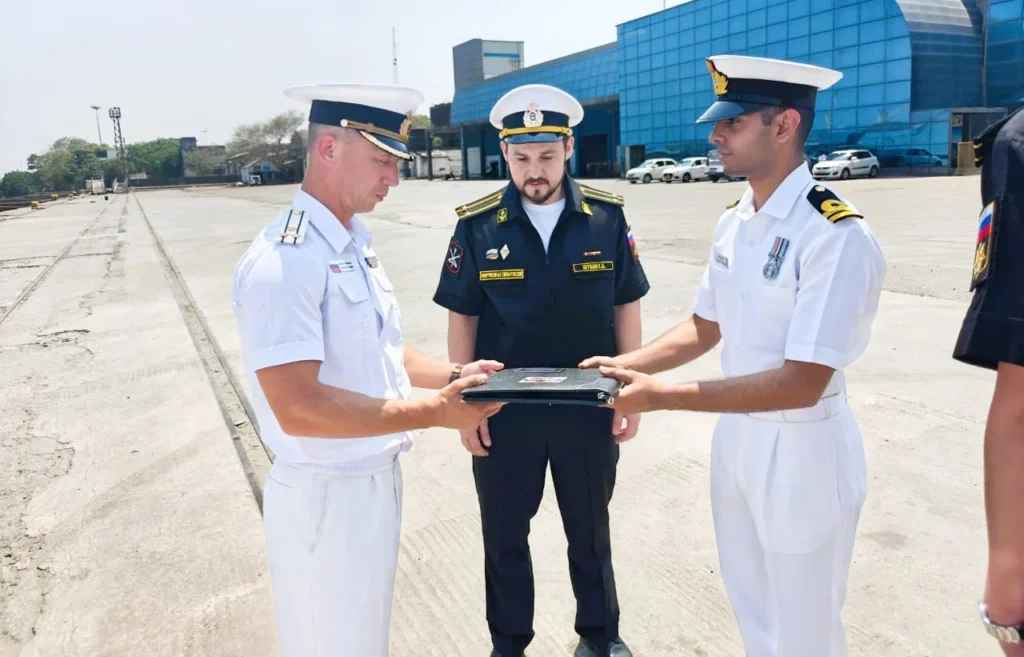
The 14th edition of Exercise INDRA is scheduled to take place off the coast of Chennai, India, from March 28 to April 2, 2025. This biennial exercise, initiated in 2003, has grown into one of the most important markers of maritime cooperation between India and Russia. Over the years, it has become a cornerstone of bilateral relations, enhancing naval interoperability, operational synergy, and fostering a deeper strategic partnership between the two nations.
This year’s edition promises to build on the achievements of previous exercises, with an increased focus on joint operational efficiency, technological exchanges, and diplomacy. As the two countries face common security challenges in the maritime domain, Exercise INDRA 2025 serves as a crucial platform for strengthening their military ties and ensuring regional maritime stability.
Exercise INDRA 2025 is a combination of both harbour and sea phases, which will showcase a variety of activities designed to enhance the operational capabilities of both the Indian Navy and the Russian Federation Navy.
Harbour Phase: Fostering Professional and Cultural Exchanges (28-30 March)
The exercise will begin with the Harbour Phase, taking place in Chennai from March 28 to 30, 2025. During this phase, the focus will be on professional exchanges, cultural interactions, and team-building activities. This phase is essential for ensuring that the personnel of both navies can establish a rapport, understand each other’s operational philosophies, and align their approaches to various naval operations.
Key activities during this phase will include:
- Opening Ceremony: A formal event to mark the commencement of the exercise, setting the tone for the days ahead.
- Subject Matter Expert Exchanges (SMEEs): These exchanges will allow specialists from both navies to share knowledge on various aspects of naval warfare, tactics, and technologies, helping to improve mutual understanding and operational coordination.
- Reciprocal Visits: Personnel from both navies will visit each other’s ships, fostering closer working relationships and understanding of each other’s capabilities.
- Sports Fixtures: Friendly sports matches will be organized to promote camaraderie between the two forces. These fixtures also provide a much-needed break from the intensity of the training, allowing personnel to bond and build trust.
- Pre-sail Briefings: Briefings will be held to ensure smooth coordination and understanding of the operational goals for the Sea Phase, ensuring that both navies are on the same page when the exercise moves to the water.
These activities emphasize the importance of cultural diplomacy alongside military cooperation. By understanding each other’s traditions, operational styles, and capabilities, the two forces can work better together in the field.

Sea Phase: Operational Drills and Joint Military Exercises (31 March – 2 April)
Following the Harbour Phase, the exercise will transition into the Sea Phase, which will run from March 31 to April 2, 2025, off the coast in the Bay of Bengal. The Sea Phase will focus on more intense, hands-on military operations, involving a series of joint drills, live-fire exercises, and advanced naval tactics. This phase is designed to push both navies to their limits in terms of coordination, operational execution, and combat readiness.
Some of the main activities of the Sea Phase will include:
- Tactical Manoeuvres and Coordinated Fleet Operations: The participating ships from both nations will practice coordinated naval maneuvers to enhance interoperability. These exercises will focus on the ability of the two navies to execute complex operations as a combined force, which is critical for any future joint missions.
- Live Weapon Firings: Live fire drills will be conducted to test the combat capabilities of both navies, ensuring that they are capable of responding to real-world threats. This includes anti-air and anti-surface operations.
- Anti-Air Operations: This exercise will simulate real-world air threats to naval assets, testing the effectiveness of the two navies’ air defense systems and their ability to work together in countering aerial attacks.
- Underway Replenishment: This operation will allow the two navies to conduct logistical operations while at sea, ensuring they can maintain operational endurance during extended missions.
- Helicopter Cross-Deck Landings: Helicopter operations will be a major component of this phase, with crews exchanging sea-riders and conducting cross-deck landings. This will further refine the ability of the navies to operate together, particularly when it comes to vertical lift operations and coordinated aerial support.
Through these advanced operations, both navies will test their real-time decision-making skills, refine their combat strategies, and improve their coordination. The sea phase not only emphasizes tactical proficiency but also highlights the growing operational synergy between India and Russia in addressing maritime security challenges.
Participating Units and Assets
Both India and Russia will contribute frontline assets to this exercise, underscoring their commitment to the partnership and their ability to mobilize powerful naval forces.
- Indian Navy Assets:
- INS Rana: A Rajput-class destroyer that will play a leading role in the exercise. Its advanced weaponry and systems will be tested in real-world conditions.
- INS Kuthar: A powerful submarine capable of conducting various naval operations and providing critical support to joint exercises.
- P-8I Maritime Patrol Aircraft: This aircraft will be involved in reconnaissance, anti-submarine warfare, and surveillance operations during the exercise.
- Russian Federation Navy Assets:
- Pechanga: A large, versatile Russian ship equipped for a variety of naval operations, from anti-submarine warfare to tactical support.
- Rezkiy: A highly advanced Russian warship with capabilities to conduct deep strike operations and strategic defense.
- Aldar Tsydenzhapov: A modern Russian vessel that can handle multiple tasks, including amphibious operations, surface warfare, and anti-air defense.
Both navies have chosen their most advanced units, ensuring that the exercise is not only a demonstration of friendship but also a serious effort to test and enhance their combat readiness.
Enhancing Operational Synergy and Diplomatic Ties
At its core, Exercise INDRA 2025 is more than just a military exercise; it represents the deepening of India-Russia ties and their shared commitment to maintaining peace and stability in the region. By combining operational training with professional and cultural exchanges, the exercise strengthens the bilateral relationship between the two nations, particularly in the maritime domain.

People-to-people exchanges, such as sports fixtures, reciprocal visits, and expert exchanges, help build mutual trust and understanding beyond the battlefield. By investing in each other’s development and exchanging best practices, both navies continue to enhance their capacity to face future challenges together.
Moreover, the exercise sends a powerful message to other regional and global powers about the strong strategic alignment between India and Russia. As both countries work together to address common security threats and challenges, particularly in the Indo-Pacific region, their commitment to multilateral maritime security is clear.
Strategic Importance: Exercise INDRA also plays a crucial role in promoting regional security. With both nations sharing similar interests in ensuring free and secure sea lanes in the Indian Ocean and Pacific Ocean, the exercise underscores their collective responsibility in safeguarding maritime security.
